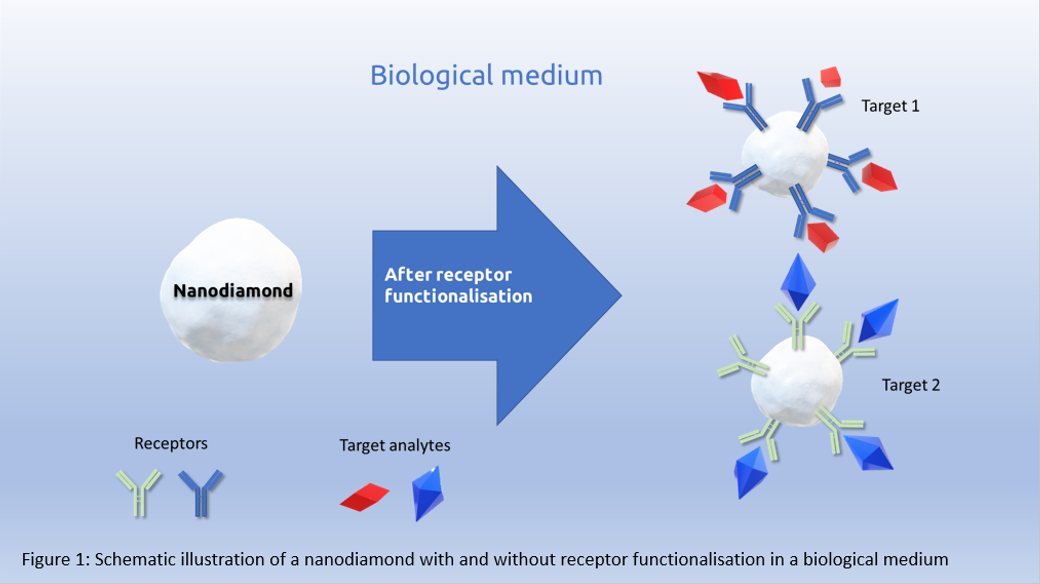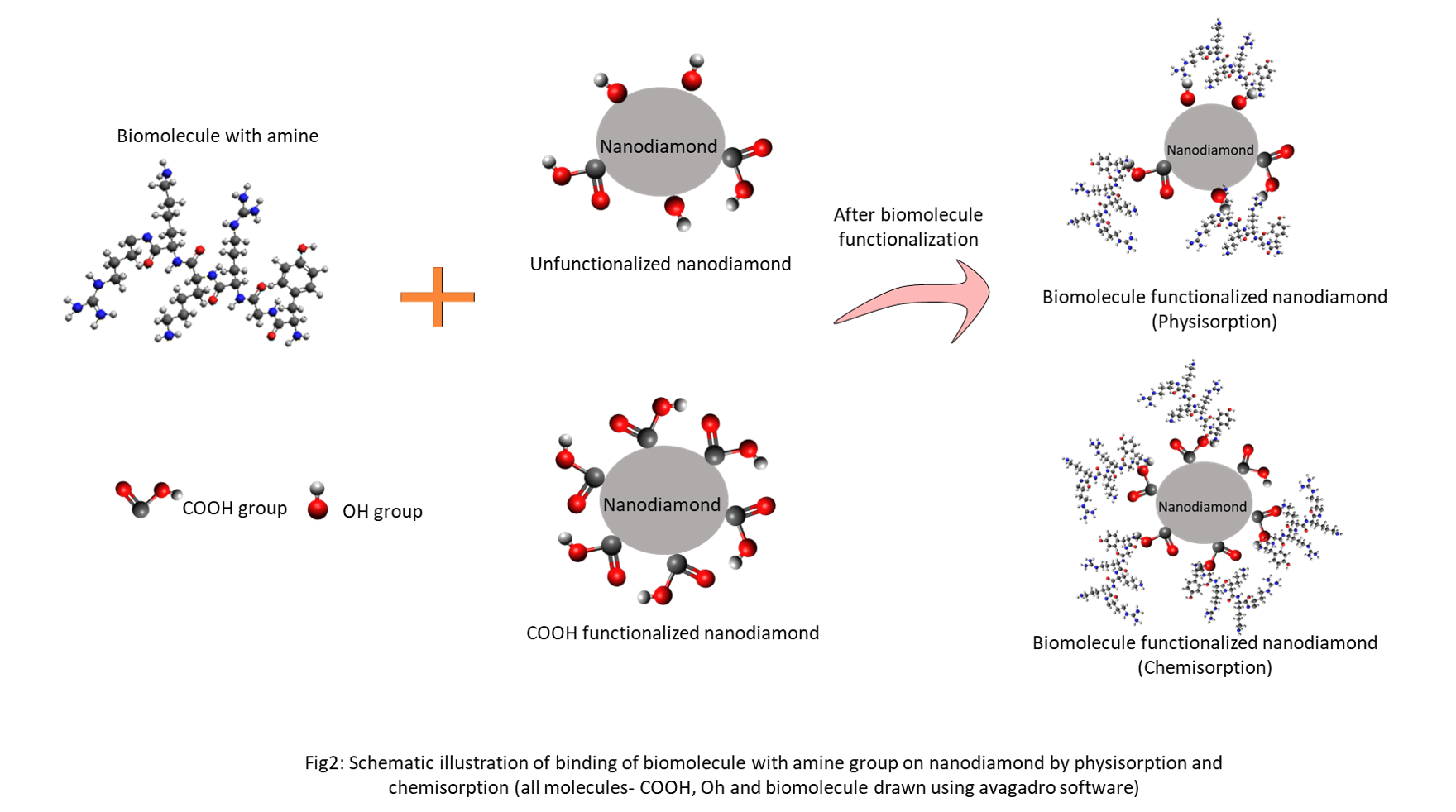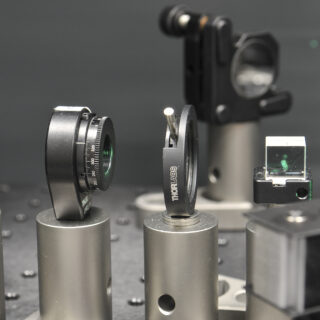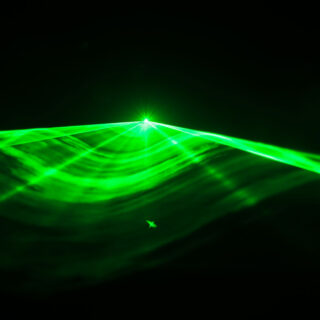The functionalisation of nano-diamonds refers to the modification of their surface that includes binding with chemicals or biomolecules (acids, proteins, etc.) to improve their properties and to bind them to specifically targeted locations with high precision [1,2].
Why is the functionalisation of nano-diamonds necessary?
The Functionalisation of nano-diamonds is necessary to use them as labels, or as sensors for specific analytes (e.g., target proteins). Similarly, when used as drug carriers, functionalized nano-diamonds improve the therapeutic effect through more site-specific delivery.
An example of the binding of a target analyte of interest to a nano-diamond with and without a receptor (recognition element) is shown in Figure 1.

Two types of surface functionalisation
Surface functionalisation of nano-diamond can be achieved either by physisorption or chemisorption.
In the case of physisorption, the chemicals or biomolecules are conjugated to the surface of the nanomaterial via an electrostatic or hydrophobic interaction.
In chemisorption, the molecules are bound to the surface of the nano-diamond by chemical bonds.
Physisorption of the molecule(s) to the surface is simpler, but less controllable and reproducible than chemisorption.

Figure 2 illustrates the surface functionalisation of a biomolecule containing amine groups on a nano-diamond.
This biomolecule can be covalently bonded to the carboxyl-functionalised nano-diamond by chemisorption.
For a non-functionalised nano-diamond, the biomolecule is bound by physisorption and the binding process is relatively less controlled.
References
1. Thiruppathi et al., Nanoparticle Functionalization and Its Potentials for Molecular Imaging.
Advanced science news (2017) 4: 1600279
2. Hamelaar et al., The interaction of fluorescent nanodiamond probes with cellular media. Microchim. Acta (2017) 184:1001–1009























